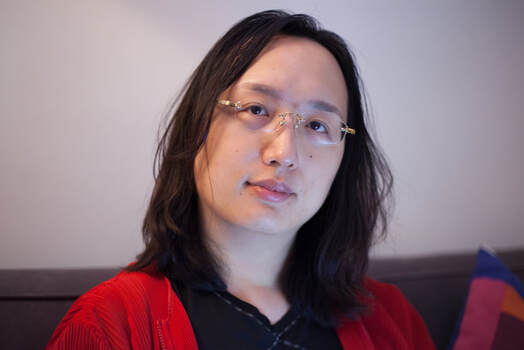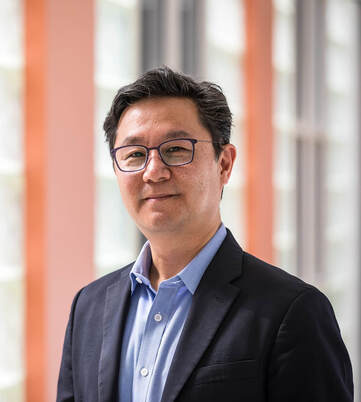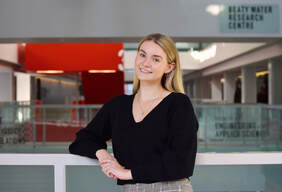|
6/29/2022 0 Comments Part 2: The Lack of LGBTQ+ People in STEM – Representation and Community MattersBy Trinity Vey The idea that a “scientist” is a white heterosexual cis-gendered man in a lab coat is a misconception that continues to persist. Being able to see yourself in role models is important; students who have gender and race-matched role models have higher academic achievement than students who don't identify with role models (Zirkel, 2002). Since LGBTQ+ identity is often not visible and many do not feel comfortable sharing their identity in the workplace, it can be hard for LGBTQ+ people to feel that they belong in STEM. Particularly for students belonging to multiple minority groups, the importance of both representation and community in STEM cannot be overstated. This blog is part two of a miniseries that will be highlighting LGBTQ+ role models in STEM and providing resources and organizations to help you find representation and community. The first blog in this series summarized research regarding current numbers and experiences of LGBTQ+ people in STEM, highlighting the need for societal change. The third and final blog in this series focuses on ways we might broaden the participation of LGBTQ+ people in STEM and make work environments more supportive for all. LGBTQ+ role models in STEM Below you can learn more about just a few of the many amazing LGBTQ+ people in STEM: Audrey Tang Audrey Tang is a non-binary transgender software programmer, as well as the youngest and first transgender official in Taiwan’s top executive cabinet. As Taiwan’s Digital Minister, Audrey has had a key role in the Taiwanese COVID-19 response. Namely, they have promoted an open-source website to help people find face masks, developed a system to reserve vaccines, and created an anonymous contact tracing system. They are passionate about establishing an open web and free software. Audrey Tang. Credit: Audrey Tang, from Flickr (CC0 1.0) Kaela S. Singleton Kaela S. Singleton is a black, Samoan, queer developmental neuroscientist. She is currently completing her postdoctoral research at Emory University, studying mitochondrial integrity and localization in the neurogenerative disorder Menkes disease. She has been recognized as one of Cell Mentor’s 1000 Inspiring Black Scientists and in Forbes 30 under 30 in Science, among other awards and honours. Kaela is currently the president-elect of Black in Neuro, an organization that empowers Black students and professionals in neuroscience-related fields. Kenro Kusumi Kenro Kusumi is a gay Asian American scientist, professor, and dean. His research studies the functional adaptation of reptiles using genomics. He uses genome sequencing as a tool for wildlife conservation. Kenro serves as a mentor and faculty advisor for LGBTQ+ student organizations and is passionate about developing an inclusive academic environment. Kenro Kusumi. Credit: Wikimedia Commons, Creative Commons Attribution-Share Alike 4.0 International license. Other examples of LGBTQ+ role models in STEM
Some other notable LGBTQ+ people in STEM, historical and present day, include Nergis Mavalvala, Allan Hellman, Sally Ride, Ben Barres, Uzi Even, Sophia Jex-Blake, Alan L, Hart, Sara Josephine Baker, Frank Kameny, Ann Mei Chang, Alan Turing, Irma Olguin Jr., Tim Cook, Ruth Gates, George Washington Carver, Micah Savin, and other members of 500 Queer Scientists. As Adam Frew, ecologist, explained: “I am starkly aware of the lack of LGBTQ+ role models and mentors within my own field. This doesn’t mean they don’t exist. It indicates that, like me, most of them don’t overtly disclose their sexual, or gender, identities, which is often a hidden characteristic. An important part of our lives is kept quiet. This only perpetuates the invisibility of the LGBTQ+ community in STEM, decreasing diversity and inclusion. It also reduces the likelihood of attracting and retaining talented young scientists, who may happen to be LGBTQ+.” Organizations and resources focused on LGBTQ+ people in STEM A 2022 study found that sexual and gender minority-focused STEM organizations can help students build social capital, by gaining a supportive network of peers and access to academic resources. Such organizations provide opportunities to meet other LGBTQ+ students and build community, help students understand their own identity, and feel a sense of belonging in STEM. Such STEM-focused organizations include Out in Science, Technology, Engineering, and Mathematics (oSTEM), Queer in Science, the National Organization of Gay and Lesbian Scientists and Technical Professionals, Pride in STEM, and the Proud Science Alliance. Other organizations that are not STEM-focused but are LGBTQ+-led include Out for Undergrad, Pflag, and Pflag Canada. One of my favourite resources is 500 Queer Scientists, a website where people submit their own biographies and stories to increase visibility and role models for LGBTQ+ people in STEM. There are currently over 1600 submissions! I encourage you to check it out and if you’re comfortable, submit your own biography. Top of Form LGBTQ+ people having visible role models that they can relate to is the first step to feeling that they belong in STEM. Having representation and community is important for increasing enrollment, retention, and satisfaction of minority groups in STEM – not just for LGBTQ+ people, but also for people of colour, women, and especially those with intersecting identities in multiple minority groups.
0 Comments
Your comment will be posted after it is approved.
Leave a Reply. |
LIFESTYLE BLOGRead our lifestyle advice, written exclusively for pre-professional women in science and engineering. From advice about fashion, work and family balance, self, wellness, and money, we've got you covered! |
The Scientista Foundation, Inc. All Rights Reserved © 2011-2021 | Based in NY | contact@scientistafoundation.org
The Network for Pre-Professional Women in Science and Engineering
The Scientista Foundation is a registered 501(c)(3) -- Donate!
The Network for Pre-Professional Women in Science and Engineering
The Scientista Foundation is a registered 501(c)(3) -- Donate!



